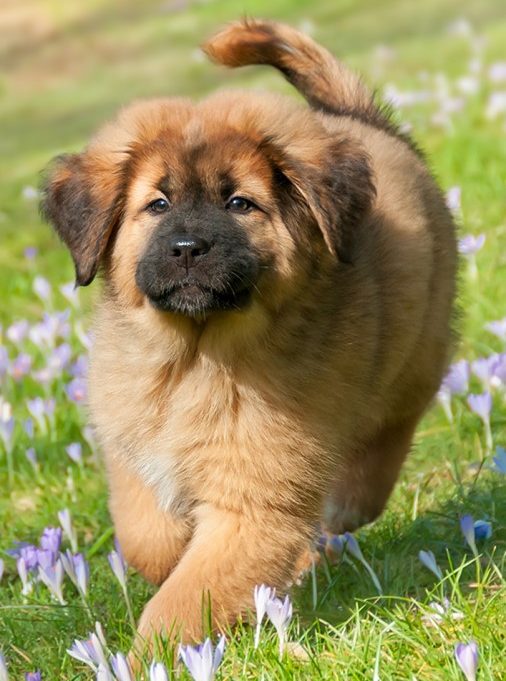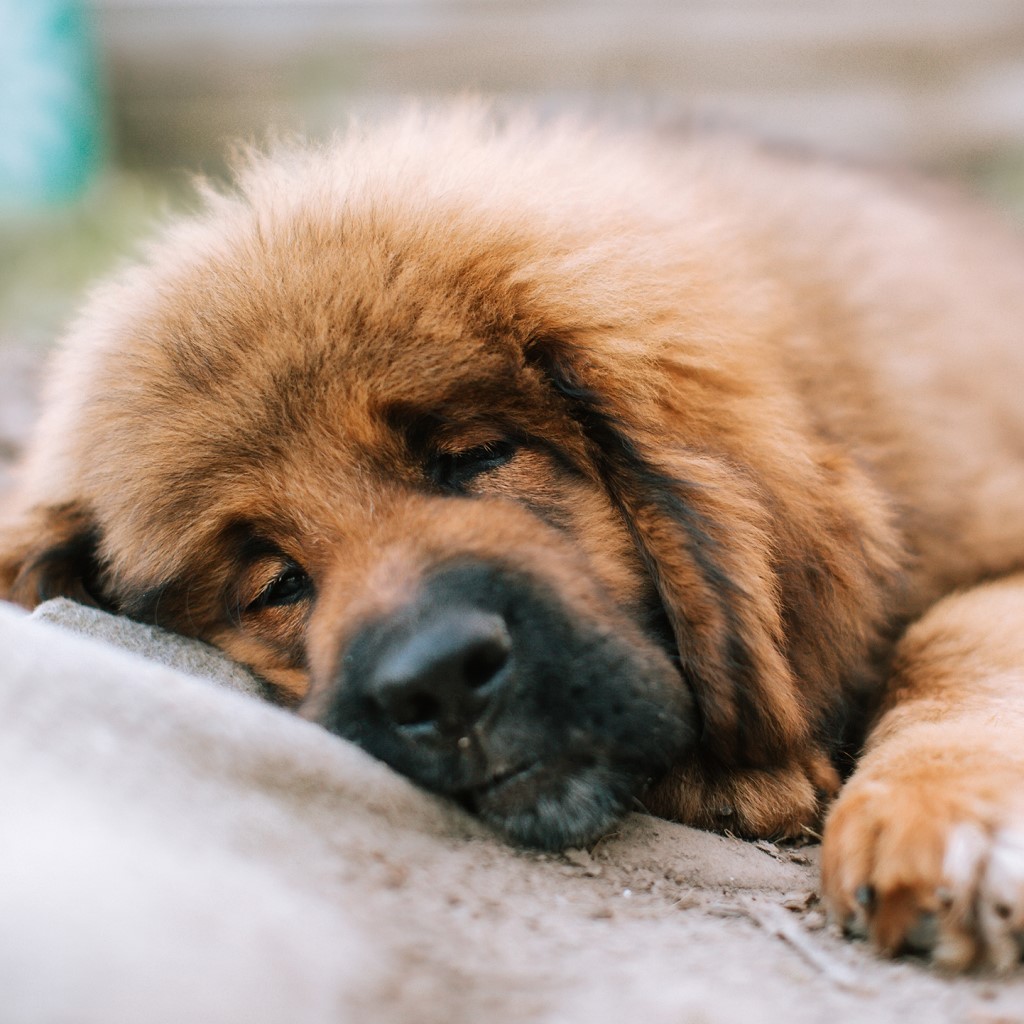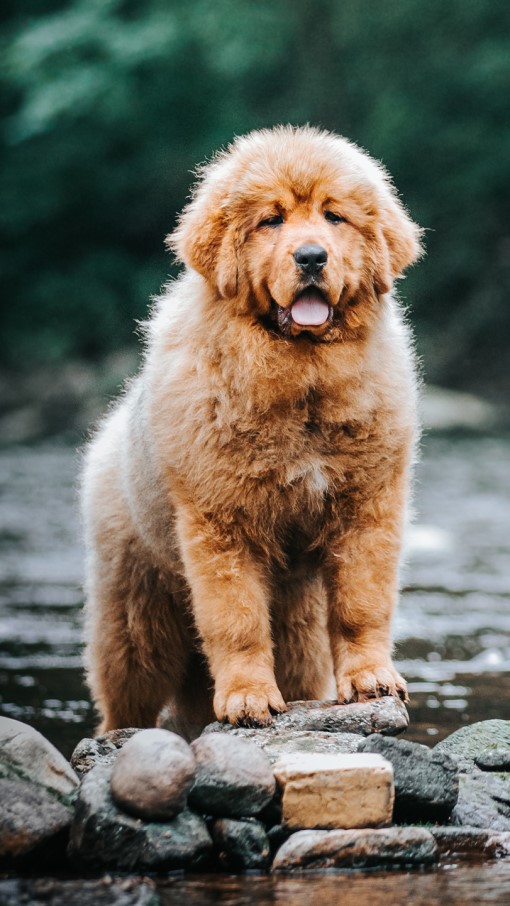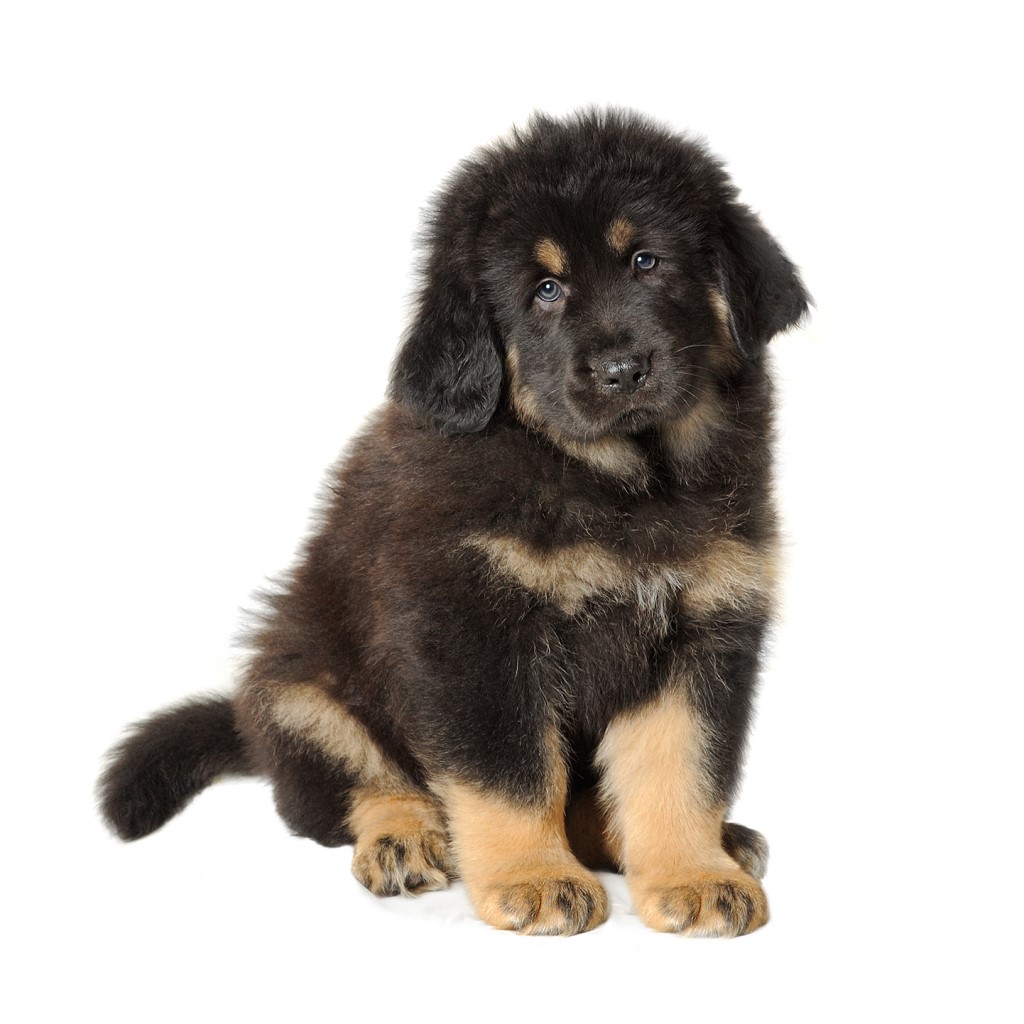How to Care for your Tibetan Mastiff
Tibetan Mastiffs are playful dogs who enjoy regular exercise, most active in the mornings and evenings. As a result of the Tibetan Mastiff’s signature thick flowing mane and coat, they enjoy moderate exercise for only 20 to 30 minutes per. day. Longer jogging sessions can lead to them overheating. The breed is more active in winter, thriving in cooler climates and prefers to leisurely walk around the block over intense exercise. As a puppy they require more physical activity, however once they mature, they often sleep during the day and become mellow.
Tibetan Mastiffs as a working breed, enjoy focusing on work-related tasks such as patrolling their territory, rather than playing fetch or catching frisbees. A medium-sized and fully fenced backyard alongside daily walks is preferred to prevent them getting bored. When not exercised the breed can be mischievous often digging up holes in the backyard or attempting to escape. This could result in destructive, aggressive, or territorial behaviour.
It is also vital to train your Tibetan Mastiff and reinforce learnings throughout their lifetime, although they tend to not respond well to traditional obedience training. Due to their large size as well as their tendency to ignore rules and go with their instincts, they can be hard to control once fully grown. The breed is also not food driven and treats in training are not always effective. The Tibetan Mastiff should not be walked off-leash as they can get territorial or aggressive of their regular walking routes, and they do not have a reliable recall.
The breed is also highly protective of their owner and family and as such does not always do well when meeting new people or animals. To reduce this, Tibetan Mastiffs should be socialised from a young age.
Tibetan Mastiffs are independent dogs and can stay home alone up to 8 hours while their owners are at work. But they do prefer another dog as a companion, often keeping themselves entertained by playing together.
If kept outside at night, they are on-duty as a guard dog, patrolling their home to protect their families inside. As such they are prone to barking in the evenings.
In terms of general health care, it is important to brush your Tibetan Mastiff’s teeth and check their ears for redness or odour. This breed has smaller ear canals than others and can be prone to infections. So, ensuring a regular ear cleaning routine is essential. Also be sure to trim their nails monthly too, preventing tears.

 Greencross Vets
Greencross Vets 





